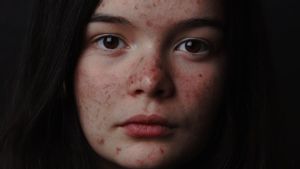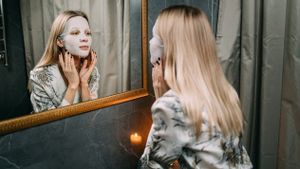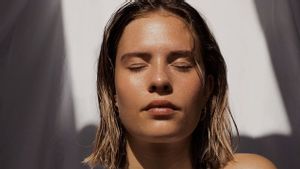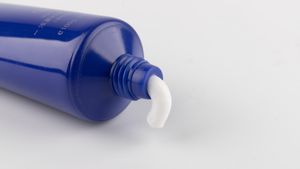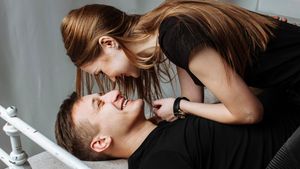JAKARTA – There are various types of acne on the face, one of which is caused by different factors. There are also different ways to deal with it.
Uniquely, acne does not only grow on the face at a young age. At any age, acne can grow for one reason or another. As reported by the Manhattan Dermatology page, Monday, November 22, according to a team of general dermatologists and cosmetics, acne can grow regardless of age.
Acne is an inflammatory skin condition that causes spots to grow on the face or other parts of the body. Generally, severe acne is caused by one of the sebaceous glands or clogged oil glands. Another factor is the buildup of sebum that protects your skin, dead skin cells that are not removed, bacteria, and dirt.
The factors above, which cause acne include temperature and humidity, use of certain makeup products, genetics, stress, anxiety, and hormonal changes associated with pregnancy and menstruation.
Types of acne can be identified by their shape. Broadly speaking, acne is divided into two main types, namely non-inflammatory acne and inflammatory acne. The following is a complete explanation of the types of acne as well as how to overcome them.
1. Blackheads
Blackheads include non-inflammatory acne or do not cause swelling of the skin. Blackheads form when pores become clogged with sebum and other impurities, such as dead skin cells. Blackheads don't just appear on the face. These black dot-like spots can grow on the back, chest, arms, shoulders, and neck.
Well, to deal with blackheads, you need to exfoliate or wear a mask to remove dead skin cells and dirt that sticks to the skin. This method can be done once a week so as not to erode the skin layer.
Another way, make sure the skin remains clean so that sebum, dead skin cells, and dirt that sticks do not trigger the growth of acne. For example, by regularly washing your face before going to bed or avoiding wearing makeup that closes the pores for a long time.

2. Whiteheads
The cause of whiteheads is the same as the causes of blackheads above, namely the outer layer of the pores closes the sebum and dirt that sticks to the skin. In effect, small spots with white tips are visible on the surface of the skin. These two types of blackheads are considered mild forms of acne.
3. Papules
When red, inflamed bumps appear on the face, they are called papules. Papules form when bacteria and dirt enter the hair follicle. Most papules grow on the face and are considered a moderate form of acne.
How to deal with papule-type acne, you can use special products to treat acne that contain salicylic acid. The content of retinoids can also help restore inflamed skin tissue.
It should also be noted that squeezing pimples with unclean hands can make acne worse. It is even necessary to avoid holding the part of the skin that is overgrown with acne so that it does not become more inflamed.
4. Pustules
Pustules are papules, inflammatory or inflamed pimples, with white tips. The white tip contains pus that forms as the body's reaction to bacteria, dead skin cells, and sebum.
As reported by the American Academy of Dermatology, acne pustules can be treated with facial soap that contains benzoyl peroxide and salicylic acid.
SEE ALSO:
5. Nodules
If the previous type of acne was mild to moderate, nodules are lesions that are inflamed, painful to the touch, and develop deeper. The cause is when sebum, dirt, and bacteria that coat the skin enter the layers of the skin through damaged hair follicles.
Nodules contain pus and do not always have white tips. Not only can grow on the face, but nodules also grow on the back, buttocks, and chest. As it grows deeper, it requires skin treatment that contains antibiotics. That is, how to treat nodules, you need to consult a dermatologist.
6. Cystic
Cystic is one of the most severe types of acne. It is painful and the most difficult to treat. Cystic acne is a large, soft, fluid-filled lump under the skin's surface. The cause of acne cysts is the same as the previous acne triggers.
7. Mechanica
As reported by WebMD, mechanica is caused by hot air, friction, and pressure on the skin. Usually often experienced when often wearing sports equipment such as a helmet or baseball cap. Mechanica is also often experienced by athletes. How to overcome this so that acne does not interfere, wear sports equipment that absorbs sweat and take a shower after sports activities.
The English, Chinese, Japanese, Arabic, and French versions are automatically generated by the AI. So there may still be inaccuracies in translating, please always see Indonesian as our main language. (system supported by DigitalSiber.id)



